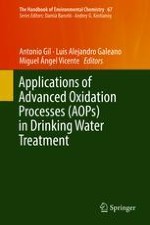This volume reviews the drinking water treatments in which AOPs display a high application potential. Firstly it reveals the typical supply sources and limitations of conventional technologies and critically reviews natural organic matter characterization and removal techniques, focusing mainly on AOP treatments. It then explores using AOPs for simultaneous inactivation/disinfection of several types of microorganisms, including highly resistant Cryptosporidium protozoa. Lastly, it discusses relevant miscellaneous topics, like the most promising AOP solid catalysts, the regime change of Fenton-like processes toward continuous reactors, the application of chemometrics for process optimization, the impact on disinfection byproducts and the tracing of toxicity during AOP treatments. This work is a useful reference for researchers and students involved in water technologies, including analytical and environmental chemistry, chemical and environmental engineering, toxicology, biotechnology, and related fields. It is intended to encourage industrial and public-health scientists and decision-makers to accelerate the application of AOPs as technological alternatives for the improvement of drinking water treatment plants.
